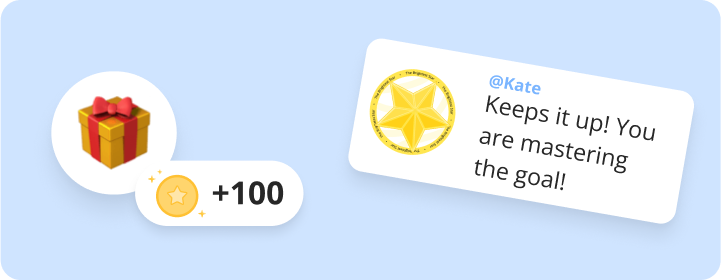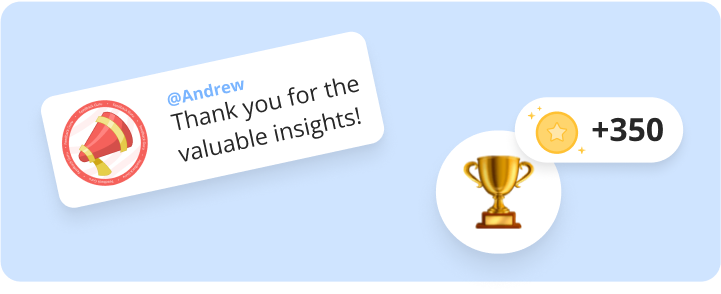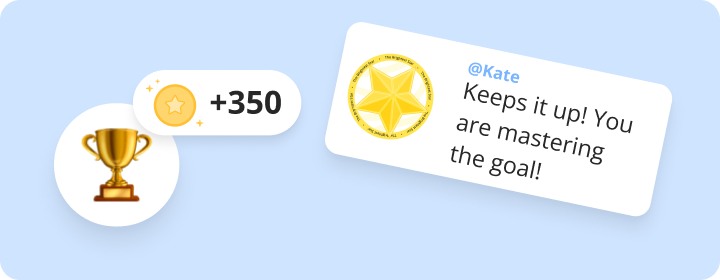How to Implement Gamification for Employee Engagement in 2025
As we step into 2025, the landscape of employee engagement continues to evolve. Traditional perks and one-off recognition moments no longer deliver the impact they once did. Today’s workforce craves purpose, connection, and fun—and that’s exactly where gamification comes in.
Done right, gamification for employee engagement goes far beyond badges and points. It taps into our innate human desire for achievement, progress, and recognition. It transforms routine tasks into meaningful missions and encourages a motivated workforce to continuously grow, collaborate, and celebrate wins together.
Whether you’re launching your first gamification program or looking to level-up your current approach, this guide is packed with insights, strategies, and ideas to help you make workplace gamification fun, inclusive, and effective in 2025.
What Is Gamification for Employee Engagement?
Gamification for employee engagement involves applying game elements and game mechanics (such as points, challenges, badges, and rewards) to non-game environments—in this case, the workplace. It’s not about turning work into play. It’s about using proven motivational tools to increase focus, drive behavior, and build momentum.
Think of it as building a competitive environment around progress and performance, where employees feel valued, recognized, and excited to reach the next milestone. From onboarding process to skill development and team bonding, gamification adds a layer of fun and purpose to every stage of the employee lifecycle.
Why You Need Gamification in 2025
Here’s how gamification for employee engagement delivers lasting value:

Boost employee engagement by making tasks feel purposeful, rewarding, and enjoyable—not just routine or obligatory.
Motivate employees with personal progress paths, challenge-based growth, and visible feedback loops that spark intrinsic motivation.
Reduce employee turnover by creating a deeper connection to company values, community, and achievement.
Foster a positive work environment rooted in recognition, peer appreciation, and shared success.
Improve employee morale through energizing micro-wins, positive feedback, and tangible rewards.
Encourage continuous learning and skill-building with interactive, challenge-based modules that support ongoing development.
Enhance communication and collaboration by gamifying teamwork, promoting transparency, and encouraging mutual recognition.
Gamification helps recreate the social energy and engagement dynamics we used to take for granted in the office. It encourages team bonding, strengthens company culture, and empowers people to stay connected to each other—and to your organization's mission.
Ultimately, gamification offers a scalable, dynamic way to encourage employees, fuel progress, and create a more engaged workforce ready to thrive in the modern workplace.
15 Ideas to Boost Gamification for Employee Engagement
Wondering how to bring these concepts to life in your organization? Here's a robust collection of practical and creative ideas to implement gamification for employee engagement. Each tactic uses gamified elements to inspire progress, spark joy, and build a more connected, energized workplace. Whether you're looking to improve onboarding, encourage learning, or build team spirit, there's a strategy here to boost morale, motivation, and meaning at work.

1. Achievement Badges and Levels
Think of your workplace like a role-playing game — each employee is on their own epic quest. Achievement badges and levels transform everyday tasks into meaningful milestones. Recognise employees for completing onboarding, hitting key project goals, or even keeping up with training sessions. As they earn badges and unlock new levels, they'll feel a sense of progression and mastery.
Want to add a dash of friendly competition? Display leaderboards or let team members show off their badges with pride. It's like creating an internal trophy cabinet where every contribution counts. Not only does this cultivate a culture of continuous improvement, but it also makes “leveling up” at work seriously fun.

2. Points-Based Rewards System
Remember when collecting points at the arcade felt like the ultimate win? Bring that same excitement into your workplace with a points-based rewards system. Employees earn points for smashing goals, collaborating on projects, or going the extra mile in customer service. The more points they earn, the more they can “cash in” for fun rewards—like gift cards, extra time off, or even office bragging rights.
This system makes every task feel like a chance to score big. It transforms daily duties into opportunities for recognition and reward, giving everyone a reason to play their best game every day. So, let the points roll in and watch your team's engagement hit the high score!
3. Friendly Competitions and Leaderboards
Who doesn't love a bit of friendly competition? Implementing a rewards system with leaderboards can bring out the best in your team. Picture this: employees battling it out (in a friendly way!) for top spots based on performance, teamwork, or creative achievements. When their accomplishments are showcased on leaderboards, it's like having a hall of fame—right in your workplace.
But it's not all about bragging rights (okay, maybe a little). Regular rewards—from coffee vouchers to big wins like an extra day off—keep the excitement alive. Public recognition adds that extra spark, inspiring everyone to push a little harder and dream a little bigger. When employees see their peers celebrated, it's game on—and it's all in the spirit of continuous growth and appreciation.

4. Missions and Challenges
Transform everyday work into an adventurous journey by creating missions and challenges for employees. These can range from short-term tasks, such as completing an important project ahead of schedule, to long-term goals like mastering a new tool or achieving a sales milestone. Create different difficulty levels, reward employees who tackle the “legendary” challenges, and introduce special team-based missions that require collaboration across departments. Completing these missions earns badges, points, or even coveted titles within the team—think “Master Collaborator” or “Innovation Leader.” By turning work goals into exciting quests, you keep employees motivated, engaged, and eager to push their limits.
5. Mystery Rewards and Surprise Bonuses
Everyone loves a good surprise, and mystery rewards do exactly that—inject excitement and anticipation into everyday tasks. Imagine employees completing a project, only to receive a surprise reward ranging from gift cards to surprise lunches, extra time off, or even team outings. The unpredictability keeps everyone on their toes, eagerly awaiting their next surprise. Consider adding “random acts of recognition,” where employees can nominate a colleague who's gone above and beyond, and that person receives a surprise bonus or recognition. This kind of spontaneous appreciation not only boosts morale but also creates a ripple effect, encouraging others to bring their best selves to work.
6. A hidden gem from Esteeme: Secret Box
Well-well-well... looks like you've stumbled upon one of the hidden gems in this article—a special idea from Esteeme: the Secret Box concept. Imagine the thrill of discovering a mystery item in your Gift Store, ready to be unlocked without any spoilers. Employees can exchange their hard-earned points to claim these exclusive Secret Boxes, which could contain anything from a sleek new company hoodie to an eco-friendly product or a themed support box. The contents can be tailored to reflect company values and initiatives, whether it's sustainability, wellness, or celebrating company culture.

The catch? Secret Boxes are limited in availability, typically reserved for the top 5%-10% of Esteeme's most engaged users. This makes the Secret Box a much-anticipated tradition, adding excitement and rewarding dedication. By weaving mystery into your recognition program, you create a buzz around rewards that sustains interest and amplifies engagement. Keep your employees guessing—and excited—with these thoughtful, thematic surprises that turn every recognition moment into an unforgettable experience.
7. Skill-Up Challenges
Encourage employees to grow by offering skill-up challenges tailored to their roles. From mastering new software, taking on advanced training sessions, to sharing their expertise through workshops or mentoring others, these challenges help employees “level up” their abilities. Offer points, badges, or even exclusive perks for completing certain milestones—like becoming a certified trainer in their field or completing a complex project. This approach not only supports career growth but creates a culture where continuous learning is celebrated. Plus, employees get to see their progress in real-time, driving further motivation to reach higher levels.
8. Digital Scavenger Hunts
Recognition isn't just for managers to dole out—peer-to-peer recognition can be even more powerful. With digital tools for shoutouts, badges, and micro-rewards, employees can recognise their colleagues for everyday wins, teamwork, and going above and beyond. Create a culture where employees feel seen and appreciated by those they work closest with. Set up “recognition walls” where shoutouts are displayed publicly or integrate features where nominations can lead to monthly recognition ceremonies. This kind of organic recognition fosters genuine appreciation, teamwork, and camaraderie across teams.
9. Peer-to-Peer Recognition Tools
Make learning fun by introducing trivia and knowledge quizzes at work. Tailor questions to your industry, company culture, or even general knowledge to create an engaging experience. Hold regular quiz sessions where employees earn points for correct answers and climb the leaderboard. Use these quizzes as a way to reinforce company knowledge, promote new initiatives, or even break the ice during team meetings. Employees stay engaged, motivated, and, best of all, have fun challenging themselves and their peers.
10. Milestone Celebrations with Virtual Awards: Raise the Trophy!
Recognising milestones, big and small, can make a huge impact on employee morale. Host virtual awards ceremonies where you celebrate work anniversaries, project completions, promotions, or individual achievements. Offer digital trophies, certificates, and personalised shoutouts. You can even create fun categories such as “Problem-Solver Extraordinaire” or “Team MVP.” This approach makes recognition moments memorable, creates a shared experience, and ensures employees feel celebrated for their contributions to the company's success.
11. Time-Based Challenges: Beat the Clock!
Bring a sense of urgency and excitement to workplace tasks with time-based challenges. Think sprints to meet goals or week-long challenges where employees aim to complete specific targets. Add bonus points, rewards, or exclusive badges for those who beat the clock. These challenges create focus, drive productivity, and add a dash of excitement to otherwise routine tasks. Whether it's hitting a sales goal within a quarter or completing a training module within a day, time-based challenges offer both motivation and a sense of accomplishment.
12. Weekly or Monthly Engagement Themes: A New Spin Each Month!
Keep engagement fresh with weekly or monthly themes designed to energise employees. Plan “Wellness Week” with yoga breaks and healthy lunch challenges, “Innovation Month” with brainstorming competitions, or even “Throwback Week” with retro-themed activities. Activities, challenges, and rewards are tailored around each theme, keeping things fresh and ensuring employees look forward to what's next. Themed engagement isn't just fun—it breaks routine and deepens employee connection.
13. Wellness Tracking with Rewards: Health is Wealth!
Support your employees' health and well-being by integrating wellness tracking with rewards. Employees can log their steps, participate in meditation challenges, or hit sleep goals—all while earning points that translate to real incentives. Offer rewards like fitness gear, healthy snacks, or wellness days off. By making wellness a part of gamified engagement, you're not only supporting healthy habits but also fostering happier, more focused employees.
14. Interactive Training Modules: Learn, Play, Repeat!
Training doesn't have to be a chore. Make it interactive with gamified modules that feature challenges, quizzes, and instant rewards for progress. Employees earn badges for completed sessions, points for knowledge tests, and can compete with others to become “training champions.” Gamified training boosts retention, makes learning memorable, and encourages employees to continually expand their knowledge and skills.
15. Virtual Escape Rooms: Break Out of the Routine!
Few activities are as engaging and collaborative as virtual escape rooms. Employees must solve puzzles, decode clues, and work together to escape within a set time. Not only do these events encourage teamwork, problem-solving, and creativity, but they also serve as a fun break from routine work. Perfect for team-building, virtual escape rooms keep spirits high and employees engaged long after the “escape” is won.
Summary: Make Engagement a Game Worth Playing
Gamification isn’t about gimmicks — it’s about empowering people. When thoughtfully implemented, gamification for employee engagement becomes a powerful tool for inspiring purpose, progress, and play in the workplace.
By applying the right gamification strategies, companies can boost employee morale, build strong teams, and turn routine tasks into energizing accomplishments. The result? A culture of continuous improvement where employees feel valued, celebrated, and connected to your company’s success.
With the help of platforms like Esteeme, it’s easier than ever to bring these gamification elements to life. From reward systems and team challenges to mystery rewards and interactive leaderboards, Esteeme turns your engagement goals into game mechanics that work. Whether your team is remote, hybrid, or on-site, Esteeme helps you boost employee engagement—one badge, one challenge, and one win at a time.
👉 Ready to build a more inspired, connected, and motivated workforce? Book a demo with Esteeme and see how gamification transforms the way your employees work, grow, and thrive.
FAQs
- Gamification uses game elements like points, badges, leaderboards, and challenges to increase employee engagement and motivation. It turns everyday tasks into rewarding experiences that align with business success.
- Not at all. Gamification can benefit any team size or industry. Even small teams can use gamification techniques like peer shout-outs or point-based prizes to drive participation and morale.
- Tools like Esteeme help implement workplace gamification through a mix of challenges, recognition, and rewards. Platforms often include analytics to track progress and improve outcomes.
- By providing immediate feedback, recognition, and a sense of accomplishment, gamification strengthens the emotional connection between employees and their work, helping to reduce employee turnover.
- Yes. Gamified learning modules help with knowledge retention and skill development, especially when paired with microlearning, quizzes, and milestone badges.







